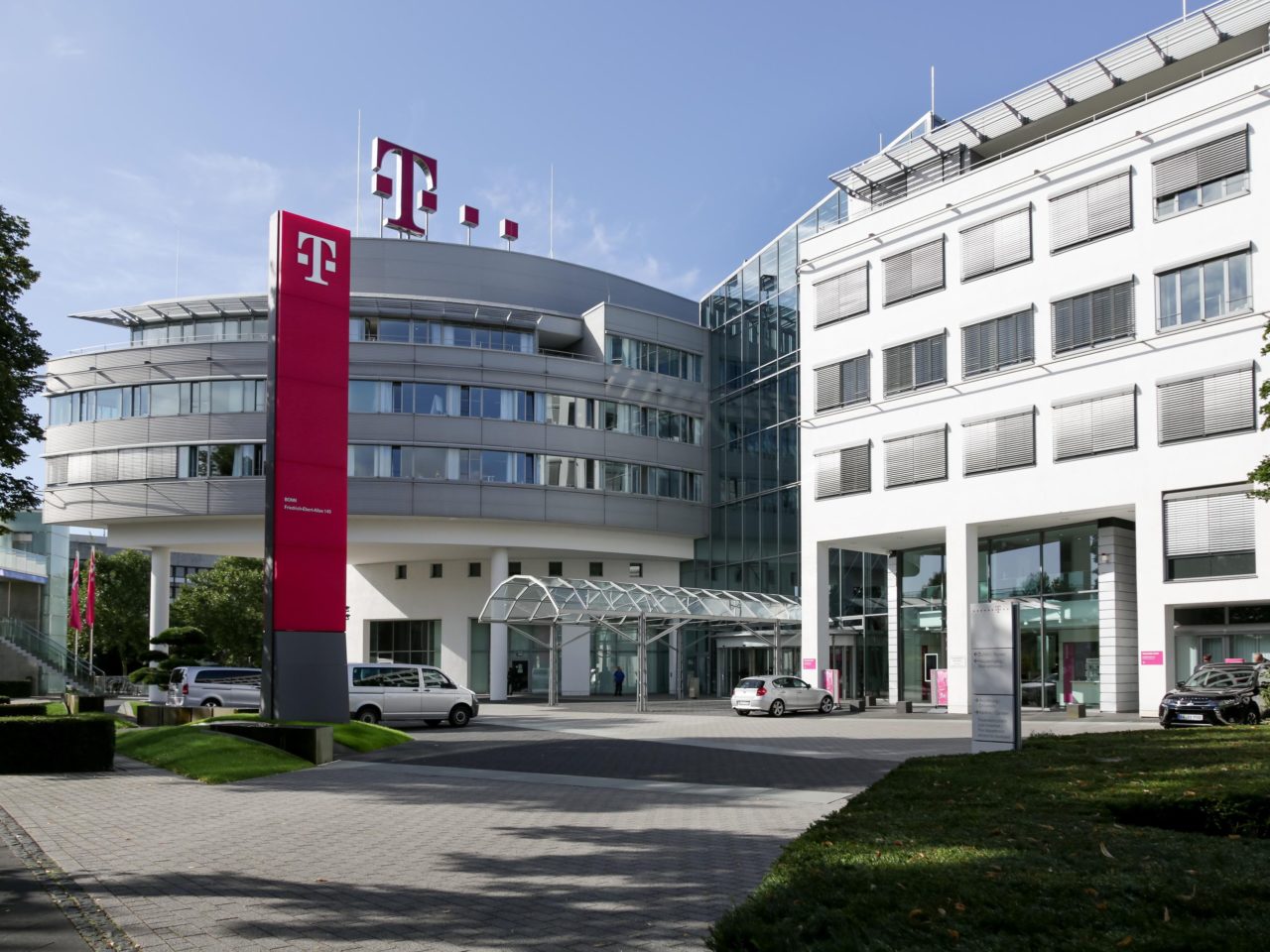Latest News

Deutsche Telekom headquarters in Bonn, Germany. Photo: Deutsche Telekom.
Deutsche Telekom (DT), one of Europe’s biggest telcos, is taking a unique approach to tackling the In-Flight Connectivity (IFC) market. The company is targeting the lucrative B2B market aggressively. Wth many of their customers frequently travelling, Rolf Nafziger, senior vice president of DT’s international wholesale business unit, told Via Satellite it was “only natural” for the operator to provide coverage to its customers in all different aspects of their lives — from on the ground to in the air.
DT also has a cooperation with Lufthansa where it provides Wi-Fi in the lounges, for example. “The next step is logically to provide coverage on the plane, and then when you land, you have our roaming services available to you,” said Nafziger. “We extend our ‘best-connected’ strategy from the ground into the air and then into roaming again. We have around 165 million mobile customers in Europe, and there are 500 million passengers travelling by plane every year. We have a superior solution with the European Aviation Network (EAN), which is an integrated solution of satellite connectivity and complementary LTE-based ground network. We envision that connectivity in the plane will be as normal in the future, as it is on the ground today.”
DT has signed a deal with Inmarsat and the companies are partners developing the EAN. Nafziger calls it an “extension” of DT’s strategy. “We have so far covered all European markets within our footprint. Wherever we are not present, we are enabling roaming, which is also one of the tasks I have,” he added. “Regarding connectivity, we have not yet entered the aviation area. So, together with our partner Inmarsat, we build the unique EAN, where we can combine our strength in mobile connectivity with latest satellite technology from Inmarsat. This fits perfectly to our strategy to provide the best connectivity to our customers wherever they are.”
Nafziger says DT’s foray into IFC will be “a profitable business.” The company’s aim is to be the leading European telco provider offering the best connectivity services. “There will be a spillover as we position ourselves in this new market. For us, it is always about retaining customers and having a best customer experience. With the combined solution of satellite connectivity and the complementary LTE-based ground network, we can provide the lowest latencies and the highest bandwidth,” added Nafziger.
DT is one of the few major telcos to aggressively pursue the IFC market in such a way. Nafziger admitted he has not heard of other telcos stepping into this market but, despite that, he said there are still highly competitive solutions due to satellite providers looking to enter this market. He describes the competition as “pretty intense.”
“In the telco market, everything is about differentiation … Our customers want to have worry-free services; they want to have easy access to services, and in the end, they select the provider not only on price, but also based on which one has the best service and price ratio. We look to embrace the best services in the market. The last remaining untapped market are the 500 million people travelling on planes across Europe every year,” he said.
It seems as though DT has gained a key early mover advantage over other telcos. Nafziger now thinks it would be “quite hard” for other telcos to step into this market. In order to be a player in IFC, DT needed to create a completely new ecosystem for the LTE ground component. “The satellite had to be developed. The components of the satellite and the complementary ground network needed to interact properly. So, everything is new,” added Nafziger.
Nafziger said that managing and advancing this highly complex EAN project with a number of partners involved is one of the key challenges facing DT. In addition to Inmarsat, which is delivering the satellite component, Nokia is its supplier to build up the specifically developed LTE-network and Thales is providing the on-board equipment for the planes. “Everything needs to go hand in hand. It is one of the most complex projects I have seen so far and the work between the partners has been particularly strong,” he said.
While the EAN is naturally focused on Europe, one of the key questions is whether DT and Inmarsat can make this a more global play. “When looking at international expansion, we don’t have concrete plans in terms of expanding outside of the European Union (EU),” Nafziger said. “If we did have the opportunities, it would depend on the frequencies available and the partners that have them. I would assume that we would like to continue with Inmarsat. In summary, I would say, there is of course a lot of strategic thinking being done, but there are no concrete plans.”
Get the latest Via Satellite news!
Subscribe Now